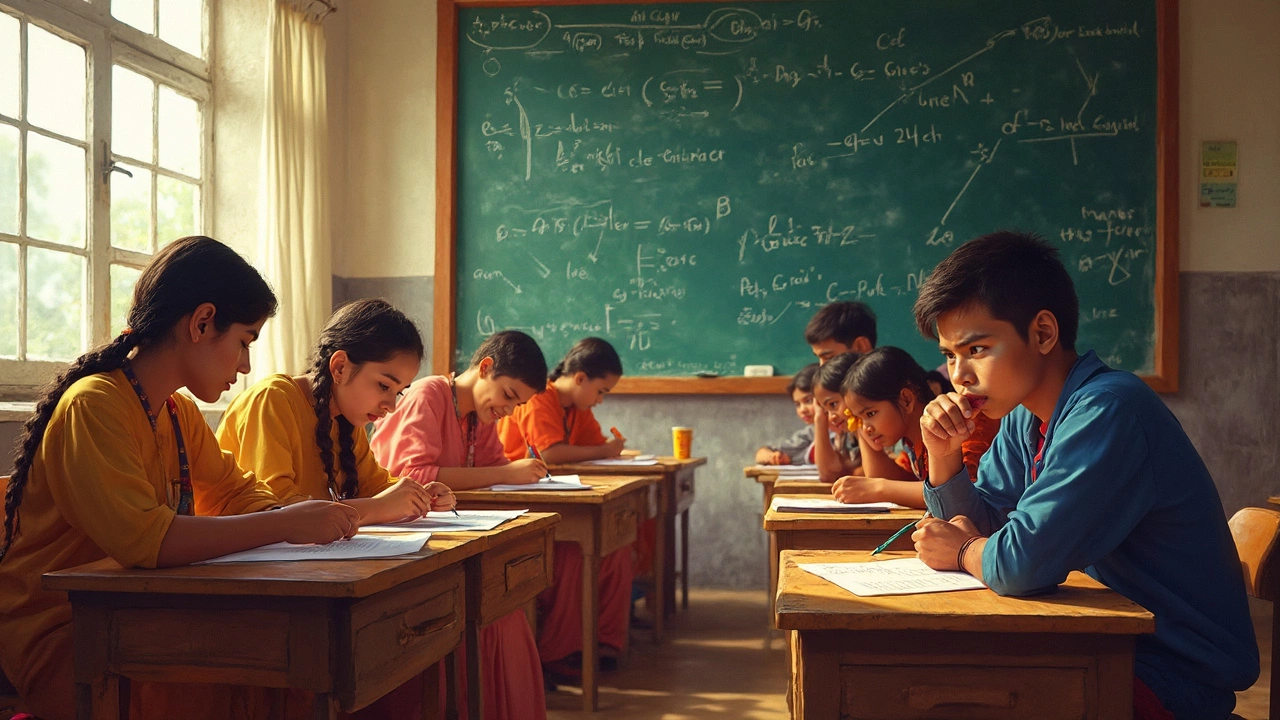When it comes to comparing the American syllabus with the CBSE curriculum, it's like comparing apples to oranges, each with its own flavor. Parents and students often wonder if one is easier than the other, but the truth is there's more to it than just 'easy' or 'hard'. Both systems have their unique characteristics and focus areas, which cater to different learning styles.
Now, CBSE, the Central Board of Secondary Education, is known for its structured approach, especially when it comes to subjects like math and science. It's all about the details, memorization, and making sure you can handle high-pressure tests. In contrast, the American syllabus can be broader and more flexible, with an emphasis on continuous assessment, encouraging students to explore and think critically.
If you're navigating this decision, whether as a student or a parent, the key is understanding how these differences impact learning and development. The CBSE might be rigorous, but it could be the right fit if you thrive under structure. Meanwhile, the American system's holistic approach could be your thing if you're all about variety and creativity.
- Understanding CBSE and American Curricula
- Key Differences in Teaching and Learning Methods
- Exam Styles: High Stakes vs Holistic Approach
- Making the Right Choice for You or Your Child
Understanding CBSE and American Curricula
Inside the academic world, the CBSE syllabus and the American syllabus stand out with their unique styles and approaches. Let's break down the basics of what makes each curriculum tick.
CBSE Curriculum: A Structured Pathway
The Central Board of Secondary Education, or CBSE, is like this well-oiled machine. Known for maintaining consistency, it's widely used in India and recognized globally. The syllabus is designed to keep a strong emphasis on core subjects like Mathematics and Science, making it ideal for students who plan to pursue careers in engineering or medicine.
CBSE is all about uniformity, so students across different schools get the same study material. This makes high-stakes exams somewhat predictable in terms of content and style. However, this also means students need to master the art of memorization and precise problem-solving skills. The good bit? If you're aiming for competitive exams within India, CBSE prepares you well.
American Curriculum: Flexibility and Diversity
On the flip side, the American syllabus enjoys a reputation for offering variety and flexibility. It's all about being broad-based. Think of it as this cafeteria-style educational experience where students have the chance to pick from a wide range of subjects and extracurricular activities.
American high schools focus on critical thinking, creativity, and practical learning. Instead of sticking strictly to textbooks, the teaching methods often include projects, group work, and interactive sessions. There's also a stress on continuous assessment through quizzes, essays, and presentations, allowing students to showcase their learning in varied ways.
Education comparison is always fascinating because what works wonders for one might not for another. A study from 2022 suggested that while CBSE students excel in subject-specific knowledge, American students often outperform in skills like problem-solving and teamwork due to the curriculum's holistic nature.
In summary, whether you're eyeing the CBSE or the American pathway, it's key to think about what suits your learning style best. Each has its strengths, and neither is a one-size-fits-all solution.
Key Differences in Teaching and Learning Methods
When comparing the CBSE syllabus with the American syllabus, one of the standout differences lies in the teaching and learning methods. Each system approaches education from a different angle, affecting how subjects are taught and absorbed by students.
Teaching Techniques in CBSE
The CBSE system often relies on a more traditional and structured format, emphasizing rote learning, which is particularly heavy in science and mathematics. Teachers provide detailed explanations and expect students to memorize and reproduce information during exams. This approach ensures students have a solid foundation of knowledge but might not leave much room for creative exploration.
Learning Methods in American Schools
In contrast, the American syllabus adopts a more varied teaching technique. Classes are often project-based, allowing students to engage in hands-on learning experiences. This method focuses on nurturing critical thinking and problem-solving skills. Such an open approach means students may explore subjects more broadly, which can be engaging for those who prefer a little more freedom to express their creativity.
Impact of Different Methods
With these teaching differences, the learning outcomes can vary significantly. CBSE students tend to excel in systematic knowledge acquisition, especially in competitive exam environments. On the other hand, students from American schools might demonstrate stronger analytical and communication skills due to more frequent presentations and group projects.
What Works Best?
Choosing which system to go with often depends on your or your child’s learning style. If structure and detailed learning are your thing, CBSE might tick those boxes. However, if you lean towards engagement and exploration with a dash of creative freedom, the American approach could be a better fit.

Exam Styles: High Stakes vs Holistic Approach
Diving into the world of education comparison between the CBSE syllabus and the American syllabus, one key area of difference is how exams are structured and conducted. These exam styles not only impact how students prepare but also influence how they understand and retain information.
High Stakes in CBSE
The CBSE system is well-known for its high-stakes exams at the end of the year. These exams play a significant role in a student's overall grade. For students in 10th and 12th grades, the board exams can feel like make-or-break moments since they often determine future educational opportunities.
Because these exams cover the entire year's syllabus, students are under pressure to memorize and perfect their understanding of large volumes of information. This intense focus might lead to a strong grasp of factual knowledge but sometimes at the expense of deeper understanding.
The Holistic Approach in America
On the flip side, the American educational system tends towards a more continuous, holistic assessment style. Instead of relying solely on one big test, students are typically assessed through a combination of quizzes, projects, presentations, and class participation throughout the year. This approach encourages ongoing learning and critical thinking, as students often need to apply concepts in varied contexts rather than simply recalling facts.
| Aspect | CBSE | American |
|---|---|---|
| Main Assessment | Annual Exams | Continuous Assessment |
| Focus | Memorization | Application |
| Pressure | High during exams | Spread throughout the year |
In essence, whether you thrive under the pressure of a few critical exams or prefer the steady pace of ongoing projects and quizzes, understanding these styles helps align educational choices with personal strengths and preferences.
Making the Right Choice for You or Your Child
Deciding between the American syllabus and the CBSE syllabus can be daunting, but focusing on your child's needs and strengths can make it easier. Different kids shine in different environments, so let's break down some essential factors to consider when making this choice.
Consider the Learning Style
If your child thrives on structure and detail-oriented studies, the CBSE syllabus might be their perfect playground. Its focus on science and math with a detailed path prepares students for competitive exams like JEE or NEET. Meanwhile, if your child enjoys exploration and project-based learning, the American syllabus offers variety and flexibility across subjects, encouraging them to think outside the box.
Examination Stress Levels
Let's face it, exams can be stressful. If your child handles exam pressure well and prefers a structured evaluation at the end of the year, CBSE’s high-stakes exam approach might suit them. On the other hand, if continuous assessment with projects, quizzes, and participation works better, they might appreciate the American method that spreads evaluation throughout the year.
Future Plans and Global Opportunities
Think about where your child is headed in life. CBSE is a great pathway if they plan to pursue further studies in India, as it aligns well with Indian competitive entrance exams. However, the American syllabus is widely recognized and appreciated by universities abroad, offering smoother admissions into international colleges.
Flexibility and Extracurricular Interests
- CBSE can be intense but offers fewer optional subjects, focusing heavily on academics.
- The American syllabus typically allows more choices in electives, helping students indulge in arts, sports, or any extracurricular interests they might have.
Ultimately, the right choice boils down to aligning the educational path with your child’s unique strengths and future aspirations. Every child deserves an environment where they can soar confidently.





